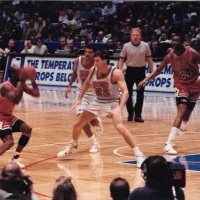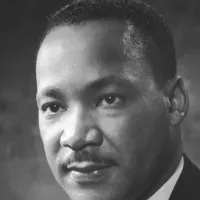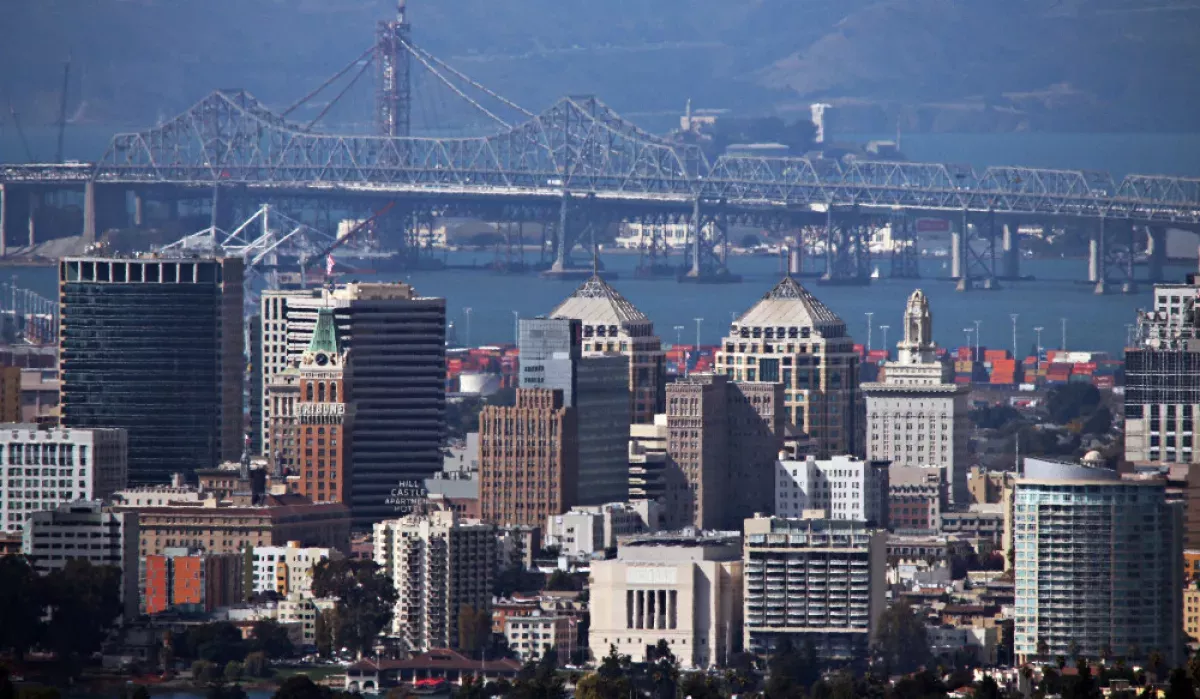Oakland, California, a major West Coast port city, holds the title of the most populous city and county seat of Alameda County. Situated in the East Bay region of the San Francisco Bay Area, Oakland stands as the largest city in its region and the third largest overall within the Bay Area. As of 2020, its population reached 440,646. Serving as the Bay Area's trade hub, Oakland boasts the busiest port in Northern California, the Port of Oakland, ranking as the fifth or sixth busiest in the United States. Established as a charter city on May 4, 1852, Oakland's incorporation coincided with California's population surge during the Gold Rush.
1900: San Francisco Plague
The San Francisco plague, which lasted from 1900 to 1904, significantly impacted Oakland, California. The city implemented quarantine measures, including vessel inspections for infected rats at its ports.
1902: Shipping Channel Construction
In 1902, a shipping and tidal channel was excavated to support Oakland's growing industrial sector and its need for a seaport. Consequently, the nearby town of Alameda became geographically isolated as an island.
1904: End of San Francisco Plague
The San Francisco plague, which lasted from 1900 to 1904, significantly impacted Oakland, California. The city implemented quarantine measures, including vessel inspections for infected rats at its ports.
1906: Piedmont Incorporated
After the 1906 earthquake, the city of Piedmont was incorporated in Oakland's central foothills. It remains a small independent city surrounded by Oakland.
1906: San Fransisco Earthquake
Following the devastating 1906 earthquake in San Francisco, many residents relocated to Oakland, contributing to its population growth, expanding its housing, and enhancing its infrastructure.
1906: Population Growth After Earthquake
In 1906, the population of Oakland doubled as a result of the influx of displaced individuals seeking refuge after the devastating earthquake and fire that struck San Francisco.
1906: San Francisco Earthquake Impact on Hayward Fault
The devastating 1906 San Francisco earthquake, caused by a rupture along the San Andreas Fault, had ripple effects on the Hayward Fault, which runs directly through Oakland. This event triggered creep (slow, aseismic movement) along the Hayward Fault, increasing the likelihood of future earthquakes in the region.
1907: Start of Period with Low Housing Construction
Between 1907 and 1920, Oakland experienced a period of relatively low housing construction.
November 27, 1908: Founding of the Rotary Club of Oakland
On November 27, 1908, during a driving rainstorm, Homer Wood took a ferry across the bay and met with Frank Bilger and 23 other businessmen at the Hotel Metropole. This lunch meeting marked the establishment of the Tri-City Rotary Club, later renamed in 1911 as the Rotary Club of Oakland, becoming the third Rotary Club globally.
1908: Quarantine and Plague Eradication Efforts
By 1908, over 5,000 individuals were quarantined in Oakland due to the plague. Hunters were deployed to eradicate rats and squirrels in affected areas. However, eradication efforts faced limitations due to insufficient funding from the State Board of Health and the United States Public Health Service. Oakland's healthcare facilities were inadequate, leading to some infected patients receiving treatment at home.
January 1911: Highest Monthly Rainfall
The highest amount of rainfall that Oakland has ever received in a single month was 15.35 inches (390 mm) in January 1911.
1911: Renaming of the Rotary Club
The Tri-City Rotary Club, established in 1908, was renamed as the Rotary Club of Oakland in 1911.
1916: Establishment of Durant Field
Russell Clifford Durant established Durant Field, located at 82nd Avenue and East 14th Street, in 1916.
1916: Fageol Motor Company Factory Establishment
The Fageol Motor Company selected East Oakland as the site for its inaugural factory in 1916. This factory was responsible for manufacturing agricultural tractors from 1918 to 1923.
1917: General Motors Factory Opening
General Motors established an automobile manufacturing facility named Oakland Assembly in East Oakland in 1917.
1918: Fageol Motor Company Starts Production
The Fageol Motor Company commenced the production of farming tractors at their East Oakland factory, spanning from 1918 to 1923.
1919: Pneumonic Plague Outbreak
In 1919, despite previous efforts, Oakland experienced a limited outbreak of pneumonic plague, resulting in the deaths of twelve people. The outbreak originated from a hunter who consumed an infected squirrel from Contra Costa Valley. To control the situation, authorities swiftly issued death certificates and implemented monitoring measures to prevent further spread.
August 9, 1920: Transcontinental Airmail Flight
On August 9, 1920, the inaugural transcontinental airmail flight, piloted by Army Captain Eddie Rickenbacker and Navy Lieutenant Bert Acosta, successfully completed its journey at Durant Field.
1920: End of Period with Low Housing Construction
Between 1907 and 1920, Oakland experienced a period of relatively low housing construction.
1920: Growth of Manufacturing Industries
By 1920, Oakland had witnessed significant growth, becoming a hub for various manufacturing industries, including metals, canneries, bakeries, internal combustion engines, automobiles, and shipbuilding.
1921: Beginning of Oakland's Expansion
Oakland underwent significant expansion during the 1920s, fueled by a growing population of factory workers. This growth led to a surge in housing construction, with approximately 13,000 homes built between 1921 and 1924.
1923: Fageol Motor Company Ceases Production
The Fageol Motor Company, which had been manufacturing farming tractors at their East Oakland factory since 1918, ceased production in 1923.
1924: End of Oakland's Expansion
Oakland underwent significant expansion during the 1920s, fueled by a growing population of factory workers. This growth led to a surge in housing construction, with approximately 13,000 homes built between 1921 and 1924.
1929: Chrysler Plant Expansion and "Detroit of the West"
Oakland's reputation as a significant automobile manufacturing hub earned it the moniker "Detroit of the West" in 1929, particularly after Chrysler expanded its presence by establishing a new plant in the city.
1937: Gertrude Stein Publishes "Everybody's Autobiography"
In 1937, Gertrude Stein published her book "Everybody's Autobiography" which included her famous quote about Oakland: "There is no there there." This quote, often misconstrued to refer to Oakland as a whole, was actually inspired by Stein's discovery that her childhood neighborhood had been replaced with an industrial park.
1940: White Population at 95.3%
In 1940, the white population in Oakland was 95.3%.
1940: World War II Labor Boom and Migration
In 1940, with the United States' entry into World War II, President Franklin D. Roosevelt urged defense industries to integrate their workforces. This led to a massive influx of laborers, including African Americans as part of the Great Migration, as well as Mexican Americans, seeking opportunities in Oakland's booming wartime industries.
1942: Kaiser Permanente Founded
Kaiser Permanente, an HMO, was started in 1942 by industrialist Henry J. Kaiser to provide medical care for Kaiser Shipyards workers during World War II.
1943: Oakland's Wartime Contributions
During World War II, the East Bay Area, including Oakland, played a crucial role in supporting war-related industries. Oakland's Moore Dry Dock Company significantly increased its shipbuilding operations, producing over 100 ships. Additionally, Oakland's canning industry, particularly in the Fruitvale District, emerged as the city's second most valuable contribution to the war effort, with a value of $100 million in 1943. Major canneries included the Josiah Lusk Canning Company, Oakland Preserving Company (originator of the Del Monte brand), and California Packing Company.
1943: Zoot Suit Riots
In 1943, amidst racial tensions exacerbated by wartime competition for jobs and housing, "zoot suit riots" erupted in Oakland, reflecting similar unrest in Los Angeles. These riots highlighted the discrimination faced by Mexican American youth during this era.
December 1946: Post-War Labor Unrest and General Strike
In December 1946, following World War II, Oakland became a focal point of labor unrest and a city-wide general strike. This reflected the broader economic adjustments and labor struggles occurring nationwide as industries transitioned from wartime production.
1946: Key System Acquisition and Streetcar Conversion
National City Lines (NCL), a General Motors subsidiary, acquired a controlling interest in Key System, Oakland's electric streetcar system, in 1946. This acquisition marked the beginning of a controversial move to replace the city's electric streetcars with diesel buses.
January 23, 1949: Record Low Temperature
The record low temperature in Oakland was 24 °F (−4 °C) on January 23, 1949, during the time that the U.S. Weather Bureau kept weather records in downtown Oakland.
1955: Alameda and Contra Costa Transit District Formation
The state Legislature established the Alameda and Contra Costa Transit District, now known as AC Transit, in 1955. This development reshaped public transportation in the region, replacing the previous streetcar system with a bus-based network.
June 24, 1957: Record High Temperature
The record high temperature in Oakland was 104 °F (40 °C) on June 24, 1957, during the time that the U.S. Weather Bureau kept weather records in downtown Oakland.
July 31, 1958: U.S. Weather Bureau Stops Keeping Records in Downtown Oakland
On July 31, 1958, the U.S. Weather Bureau stopped keeping weather records in downtown Oakland after keeping them there since October 4, 1894.
1958: AC Transit Replaces Key System
The Alameda and Contra Costa Transit District, AC Transit, originated in 1958 after the dissolution of the Key System of streetcars. Many AC Transit lines follow old routes of the Key System.
1959: Oakland Athletics' Potential Relocation
If the Oakland Athletics' proposed move to Las Vegas goes through, it would mark the first time since 1959 that Oakland would be without a major professional sports team.
1959: Vallerga v. Dept. Alcoholic Bev. Control Victory
In a landmark victory for LGBTQ+ rights, Mary's First and Last Chance, a lesbian bar in Oakland, won its case against the California Department of Alcoholic Beverage Control in 1959. The court ruled in favor of the bar's right to serve gay patrons, challenging discriminatory practices of the time.
1960: Kaiser Corporation Headquarters Opening
Kaiser Corporation inaugurated its new headquarters in Oakland in 1960. At the time, the building was a significant architectural achievement, standing as the largest skyscraper in Oakland and a symbol of the city's postwar growth.
1960: Government-Funded Social Programs
Prior to 1960, successful government-funded social programs in Oakland provided support and guidance to rebellious teens. These programs, offered through youth centers, aimed to instill positive values and improve behavior, but their implementation became inconsistent in later years.
1963: Relocation of General Motors Factory
The General Motors factory, Oakland Assembly, which had been producing Chevrolet cars and GMC trucks, was relocated to Fremont in southern Alameda County in 1963.
1966: Racial Tensions and Police Inequality
By 1966, racial tensions in Oakland were high, fueled by a significant disparity between the city's growing African American population and the lack of representation within the police force. This inequality contributed to widespread distrust and accusations of police brutality.
1967: California Golden Seals Join the NHL
The California Golden Seals, a professional ice hockey club, joined the National Hockey League (NHL) in 1967 as part of a six-team expansion.
1970: End of the Great Migration
By 1970, the Great Migration, which saw millions of African Americans leave the South for better opportunities, came to an end. This period significantly shaped Oakland's demographics and social landscape.
1970: California Golden Seals Undergo Name Changes
The California Golden Seals underwent a series of name changes in 1970, briefly becoming the Bay Area Seals before settling on the California Golden Seals.
1970: Oakland Museum Weather Station Established
The Oakland Museum weather station, one of the two official weather stations in Oakland operated by the National Weather Service, was established in 1970.
1970: Growth of Black Institutions Slows
The growth of Oakland's long standing black institutions, such as churches, businesses and nightclubs, which had developed during the growing years of the 1950s through 1970, began to slow and decline.
September 1971: Warmest Recorded Night
Oakland's warmest recorded night was in September 1971 when the temperature reached 72 °F (22 °C).
1972: Richard Nixon's Performance in Oakland's Presidential Election
In the 1972 presidential election, Richard Nixon, the Republican candidate, garnered at least one-third of the vote in Oakland. Since then, there has been a general decline in the Republican percentage of the vote in subsequent presidential elections held in the city.
1972: Oakland Athletics Win First World Series Championship
The Oakland Athletics, a Major League Baseball team, began a streak of three consecutive World Series championships in 1972.
1973: Oakland Athletics Win Second Consecutive World Series Championship
The Oakland Athletics continued their winning streak in 1973, securing their second consecutive World Series championship.
1974: Golden State Warriors Win Their First NBA Championship
The Golden State Warriors achieved their first NBA championship victory in 1974, marking a historic moment for the team.
1974: Oakland Athletics Achieve Third Consecutive World Series Victory
The Oakland Athletics completed their historic run of three consecutive World Series championships in 1974.
1976: California Golden Seals Relocate to Cleveland
After struggling to find success in Oakland, the California Golden Seals relocated to Cleveland prior to the start of the 1976-1977 season, becoming the Cleveland Barons. Unfortunately, the team ceased operations just two years later.
1976: Death of Homer Wood
Homer Wood, who played a role in establishing the Rotary Club of Oakland, passed away in 1976.
1976: Oakland Raiders Win Super Bowl XI
The Oakland Raiders, Oakland's former football team in the National Football League (NFL), celebrated a significant victory in 1976 by winning Super Bowl XI.
1980: High Point of Oakland's Black Population
In 1980, Oakland's African American population reached its peak, representing a significant portion of the city's demographics. This marked a historical high point in the city's racial composition.
1980: Black Population Peaks
Oakland's Black population peaked in 1980 at about 47% of the population.
1980: Oakland Raiders Triumph in Super Bowl XV
The Oakland Raiders continued their winning ways in 1980, securing their second Super Bowl victory in Super Bowl XV.
1983: Western Pacific Railroad Absorbed by Union Pacific
The Sacramento Northern Railroad was absorbed by the Western Pacific Railroad, which in turn was absorbed by Union Pacific (UP) in 1983.
1987: Study on Crime Trends in Oakland
A 2014 study by UC Berkeley examined crime in Oakland from 1987 to 2012, concluding that crime rates had decreased significantly since the early 1990s but violent crime remained a concern. The study noted that Oakland's crime trends mirrored those of other California cities, suggesting regional factors at play.
1988: Oakland Athletics Return to the World Series
After over a decade, the Oakland Athletics returned to the World Series in 1988, marking the beginning of another impressive run.
October 17, 1989: Loma Prieta Earthquake
On October 17, 1989, the Loma Prieta earthquake, measuring 6.9 on the Richter scale, caused significant damage throughout Oakland. Structures like the Cypress Freeway (Interstate 880) collapsed, and the Bay Bridge sustained substantial damage, highlighting the city's vulnerability to seismic activity.
1989: Oakland Athletics Secure Their Fourth World Series Title
In 1989, the Oakland Athletics emerged victorious in the World Series, clinching their fourth championship title.
1989: Loma Prieta Earthquake Forces Oakland City Hall Evacuation
The 1989 Loma Prieta earthquake caused significant damage to Oakland City Hall, leading to its evacuation. The building remained unoccupied until 1995 while undergoing extensive seismic retrofit and hazard abatement work, costing US$80 million. During this time, city offices were temporarily relocated to leased spaces and other locations.
1989: Loma Prieta Earthquake Impact on Hayward Fault
The 1989 Loma Prieta earthquake, also linked to the San Andreas Fault, further impacted the Hayward Fault, which runs through Oakland and other East Bay cities. This event highlighted the interconnectedness of fault systems in the Bay Area and the ongoing seismic risks faced by the region.
1989: Loma Prieta Earthquake Damages Cypress Street Viaduct and Bay Bridge
The Cypress Street Viaduct double-deck segment of the Nimitz Freeway collapsed during the 1989 Loma Prieta earthquake, killing 42 people. The east span of the San Francisco–Oakland Bay Bridge also suffered damage.
1990: White Population at 32.5%
By 1990, the white population in Oakland had declined to 32.5% due to a combination of factors, including suburbanization.
1990: Oakland Athletics' World Series Run Ends
The Oakland Athletics' quest for another consecutive World Series title ended in 1990, concluding their impressive three-year run in the championship series.
October 20, 1991: Oakland Firestorm
A devastating firestorm swept through the hills above Oakland on October 20, 1991, claiming 25 lives and destroying thousands of homes. This disaster, one of the worst urban firestorms in U.S. history, resulted in widespread destruction and billions of dollars in damages.
1991: Oakland Hills Fire
In 1991, dry, warm offshore "Diablo" winds allowed the catastrophic Oakland Hills fire to spread and consume many homes.
1995: Oakland City Hall Reopens After Seismic Retrofit
After six years of closure and extensive renovations, Oakland City Hall reopened in 1995 following the completion of a US$80 million seismic retrofit and hazard abatement project. The renovations aimed to enhance the building's structural integrity and ensure the safety of occupants in the event of future earthquakes.
1996: Oakland Police Department Staffing Levels
The Oakland Police Department's staffing levels have fluctuated over the years. In 1996 and 2012, the department had its lowest number of officers at 626. This information highlights the challenges faced by the department in maintaining adequate staffing levels to address crime and safety concerns.
1996: Telecommunications Act Deregulates Telecommunications Services
The Telecommunications Act of 1996 allowed multiple private corporations and service providers to provide telecommunications and subscriber television services in Oakland.
July 1997: Start of Wettest Rain Year
The wettest “rain year” on record for Oakland began in July of 1997 and lasted until June of 1998.
1997: Reconstruction Begins on Cypress Street Viaduct
Reconstruction began on the Cypress Street Viaduct in 1997 after its collapse during the 1989 Loma Prieta earthquake.
June 1998: End of Wettest Rain Year
Oakland's wettest “rain year” on record ended in June of 1998. The rain year, which began in July of 1997, saw 47.76 inches (1,213.1 mm) of rain.
1998: Oakland Adopts Land Use and Transportation Plan
Oakland adopted the Land Use and Transportation (LUTE) element of Oakland's General Plan in 1998.
1998: Downtown Housing Development Plan
Oakland's 1998 General Plan laid the groundwork for downtown housing development, particularly within the designated Central Business District. This plan, while aiming to revitalize the area, sparked debates about potential gentrification and displacement of lower-income residents.
1999: Oakland Adopts Bicycle Master Plan
The Oakland City Council adopted a Bicycle Master Plan in 1999 as a part of the Land Use and Transportation (LUTE) element of Oakland's 1998 General Plan.
1999: Mayor Jerry Brown's Downtown Housing Push
Upon taking office in 1999, Mayor Jerry Brown continued his predecessor's focus on downtown housing development in Oakland. This policy, while intended to increase housing stock, drew criticism for potentially exacerbating gentrification and displacement of vulnerable communities.
2000: Census: Poverty Statistics
According to the 2000 Census, 19.4% of Oakland's population and 16.2% of families were below the poverty line.
2000: U.S. Census Data
In 2000, the U.S. Census revealed that Oakland had the third-highest concentration of gays and lesbians among the 50 largest U.S. cities. This data highlighted Oakland's significant LGBTQ+ population, with 2,650 lesbian couples identifying as such, representing one in every 41 couples in the city.
2000: Start of Black Population Decline
Oakland's Black population decreased by nearly 25 percent between 2000 and 2010.
2000: Summit Medical Center Merges with Alta Bates
Summit Medical Center merged with Berkeley-based Alta Bates in 2000. All campuses now operate under the Sutter Health network.
2001: Start of Period of High Police Misconduct Settlements
From 2001 onwards, Oakland faced numerous lawsuits and paid out substantial settlements, totaling millions of dollars, related to allegations of police misconduct and abuse. This highlighted deep-rooted issues within the police department and its relationship with the community.
2001: Cypress Street Viaduct Reconstruction Completed
The Cypress Street Viaduct, rerouted around the perimeter of West Oakland, was rebuilt in 2001 after its collapse during the 1989 Loma Prieta earthquake.
2001: SFSU Oakland Multimedia Center Opens
The SFSU Oakland Multimedia Center opened in 2001, allowing San Francisco State University to conduct classes near downtown Oakland.
2002: Oakland Unified School District Placed in State Receivership
Due to a combination of financial challenges and administrative difficulties, the Oakland Unified School District (OUSD) was placed under the receivership of the state of California in 2002. This intervention aimed to address the district's problems and improve its overall functioning.
2002: Oakland Higher Education Center Opens Downtown
In 2002, the Oakland Higher Education Consortium and the City of Oakland's Community and Economic Development Agency (CEDA) opened the Oakland Higher Education Center downtown to provide access to multiple higher education service providers.
2002: Oakland Police Department Staffing Levels
The Oakland Police Department reached its highest staffing level in 2002, with 814 officers. This peak in staffing reflects efforts to enhance public safety and address crime concerns during that period.
2005: HERETHERE Sculpture Installation
The City of Berkeley installed a sculpture titled HERETHERE in 2005. Located on the Berkeley-Oakland border at Martin Luther King Jr. Way, the artwork features eight-foot-tall letters spelling "HERE" and "THERE" positioned in front of the BART tracks as they transition from their elevated section in Oakland to the subway through Berkeley.
2005: Oakland Reaffirms Bike Plan
The Oakland City Council reaffirmed the bike plan in 2005.
2006: BART Headquarters Relocates
BART's headquarters, originally located in a building above the Lake Merritt BART station, relocated to the Kaiser Center in 2006 due to seismic safety concerns.
2007: Analysis of Crime in Oakland
A 2007 journal article linked the rise in crime in Oakland since the 1970s to the increase in street narcotics sales and use. The city became a hub for heroin and cocaine distribution, leading to gang conflicts and violence. This period saw a surge in shootings, rape, robbery, burglary, and auto theft, highlighting the impact of the drug trade on crime rates.
2007: Poverty and Homelessness Statistics
In 2007, approximately 15.3 percent of families and 17.0 percent of the general population in Oakland were below the poverty line. 0.7% of the population was homeless.
2007: Census Data Shows High Public Transportation Use in Oakland
In 2007, data compiled by the United States Census Bureau showed that 24.3% of Oaklanders used public transportation, walked, or used "other means" to commute to work.
2007: Oakland Revises Bike Plan
The Oakland City Council revised the bike plan in 2007 after reaffirming it in 2005.
2007: Oakland Tribune Relocates
The Oakland Tribune moved its offices from the Tribune Tower to an East Oakland location in 2007.
January 26, 2008: Highest 24-Hour Rainfall
Oakland received the most rainfall it has ever received in a 24 hours period on January 26, 2008, with 4.29 inches (109 mm) falling.
2008: Oakland Unified School District Exits State Receivership
After six years under state control, the Oakland Unified School District (OUSD) emerged from receivership in 2008. During this period, significant efforts were made to stabilize the district's finances, enhance administrative practices, and improve educational outcomes for students.
2008: Gasoline Price Spikes
Gasoline prices spiked in 2008 following the 2007 Census data collection.
2008: Violent Crime in Oakland Neighborhoods
In 2008, violent crime remained a significant issue in specific East and West Oakland neighborhoods. A staggering 72% of homicides occurred in just three City Council districts, highlighting the concentration of violence in these areas despite representing 44% of Oakland's population.
November 2010: Jean Quan Elected Mayor in Oakland's First Ranked-Choice Election
In November 2010, Jean Quan made history by becoming the first female mayor of Oakland. Her victory was notable for being the outcome of the city's first ranked-choice voting election, a system designed to empower voters by allowing them to rank candidates based on their preferences.
2010: End of Black Population Decline
Between 2000 and 2010, Oakland's Black population decreased by nearly 25 percent.
2010: Impact of Gentrification in West Oakland
Between 2010 and 2017, West Oakland experienced the effects of gentrification as median household income rose from $80,700 to $86,300. Additionally, the percentage of the population with four-year degrees increased significantly, rising from one-third to nearly one-half during this period.
2010: Decline of Oakland's Black Population
By 2010, Oakland's African American population had decreased significantly to 28% of the city's total. This decline was largely attributed to factors such as rising housing costs, gentrification, and economic disparities, forcing many longtime residents to leave.
2010: 2010 Census: Racial Makeup
Data from the 2010 United States Census shows the racial makeup of Oakland as 134,925 (34.5%) White (non-Hispanic White 25.9%), 129,471 (28.0%) African American, 3,040 (0.8%) Native American, 65,811 (16.8%) Asian, 2,222 (0.6%) Pacific Islander, 53,378 (13.7%) from other races, and 21,877 (5.6%) from two or more races. 99,068 residents identified as Hispanic or Latino of any race (25.4%).
2010: Oakland's Nightlife Renaissance
Following the relaxation of its cabaret laws in 2010, Oakland experienced a resurgence in its nightlife scene, earning it the nickname "New Sin City" in 2012. The city's diverse range of bars and nightclubs, from dive bars to dance clubs and jazz bars, contributed to its vibrant nightlife.
2010: 2010 Census: Largest Ethnic Group
In the 2010 census, African Americans maintained their status as Oakland's single largest ethnic group, with 27% of the population.
October 10, 2011: Occupy Oakland Protests Begin
Inspired by the Occupy Wall Street movement, activists in Oakland launched the "Occupy Oakland" protests on October 10, 2011. Centered at Frank Ogawa Plaza, these demonstrations voiced grievances against economic inequality, social injustice, and police brutality.
2011: Oakland Ranks High in Bicycle Commuting
According to the U.S. Census Bureau's 2011 American Community Survey, Oakland came in seventh place out of the 100 largest cities in the nation by percentage of people that chose to commute by bike in 2011.
2011: Walk Score Ranks Oakland
In 2011, Oakland was ranked the tenth most walkable city in the United States by Walk Score.
2011: Oakland Tribune Folds
The Oakland Tribune, which published its first newspaper on February 21, 1874, folded in 2011.
2012: Study on Crime Trends in Oakland
A 2014 study by UC Berkeley examined crime in Oakland from 1987 to 2012, concluding that crime rates had decreased significantly since the early 1990s but violent crime remained a concern. The study noted that Oakland's crime trends mirrored those of other California cities, suggesting regional factors at play.
2012: Oakland's Nightlife Renaissance
Following the relaxation of its cabaret laws in 2010, Oakland experienced a resurgence in its nightlife scene, earning it the nickname "New Sin City" in 2012. The city's diverse range of bars and nightclubs, from dive bars to dance clubs and jazz bars, contributed to its vibrant nightlife.
2012: Hispanics Become Second Largest Ethnic Group
In 2012, Hispanics displaced Blacks as the second-largest ethnic group in Oakland. However, Black Americans still form the second largest racial group.
2012: Implementation of Operation Ceasefire
In 2012, Oakland implemented "Operation Ceasefire," a program aimed at reducing gang violence. This initiative, based on strategies by David M. Kennedy, reflects the city's efforts to address gang-related crime and improve public safety.
2012: Median Household Income
In 2012, Oakland ranked in the top 20 of American cities in median household income, with a median household income of US$51,863 and a median family income was US$59,459.
2012: Oakland's Recognition as a Travel Destination
Oakland gained national recognition as a top travel destination in 2012. The New York Times named it the top North American city to visit, praising its culinary scene, music venues, and nightlife. It also earned accolades for its entertainment options and recreational opportunities, solidifying its appeal to travelers.
2012: Oakland Reaffirms Bike Plan Again
The Oakland City Council reaffirmed the bike plan again in 2012.
2012: Oakland Police Department Staffing Levels
The Oakland Police Department's staffing levels have fluctuated over the years. In 1996 and 2012, the department had its lowest number of officers at 626. This information highlights the challenges faced by the department in maintaining adequate staffing levels to address crime and safety concerns.
December 2013: Unemployment Rate
As of December 2013, Oakland's unemployment rate was 9.7%.
2013: Oakland's Park System Earns National Recognition
In 2013, Oakland received national recognition for its exceptional park system, ranking 18th among the 50 most populous U.S. cities in The Trust for Public Land's ParkScore ranking. This recognition highlighted the city's dedication to providing its residents with access to quality green spaces.
2013: Oakland Unified School District Test Scores Show Disparities
In 2013, test scores from the Oakland Unified School District (OUSD) revealed disparities in academic performance, with overall results lagging behind the state average for California. These disparities were particularly pronounced due to the high proportion of English-language learners within the district's student population. However, it is important to note that some individual schools within the district demonstrated significantly better performance than the citywide average.
2013: Oakland's Recognition as a Travel Destination
Oakland continued to receive recognition for its vibrancy and attractions in 2013, topping the list of "America's Most Exciting Cities" due to its high concentration of movie theaters, theater companies, and museums. Its appeal to "hipsters" further enhanced its reputation as a cultural hub.
2013: Tourism Boom in Oakland
Oakland experienced a surge in tourism in 2013, with over 2.5 million visitors contributing US$1.3 billion to the local economy. This growth in tourism led to increased hotel demand, with occupancy rates reaching 74% and a 14% rise in Revenue Per Available Room (RevPAR), the highest increase among major cities in the western U.S.
2013: Oakland's Thriving Art Scene
Oakland's thriving art scene earned it a place among America's top twelve art communities in 2013. Its neighborhoods, including Downtown (including Uptown), Chinatown, Old Oakland, and Jack London Square, were recognized for their unique blend of art, artists, and creative spaces.
2013: Economic Growth in the San Francisco-Oakland-Hayward Metro Area
The San Francisco-Oakland-Hayward metropolitan area boasted a gross domestic product (GDP) of US$360.4 billion in 2013, ranking eighth among U.S. metropolitan areas. This ranking highlights the region's significant economic power and growth.
April 2014: Golden State Warriors Announce Departure from Oakland
In April 2014, the Golden State Warriors, Oakland's former basketball team, announced their decision to leave Oakland upon the completion of their new arena in San Francisco.
2014: Study on Crime Trends in Oakland
A 2014 study by UC Berkeley examined crime in Oakland from 1987 to 2012, concluding that crime rates had decreased significantly since the early 1990s but violent crime remained a concern. The study noted that Oakland's crime trends mirrored those of other California cities, suggesting regional factors at play.
2014: Oakland's Emergence as a Career Hub
Oakland emerged as a prime location to start a career in 2014, ranking as the top city in California after San Francisco for professional opportunities. This recognition attracted professionals and businesses to the city, contributing to its economic growth.
2014: Start of Increased Tenant Protections
Oakland started strengthening its tenant protection policies in 2014 to combat displacement caused by rising housing costs and gentrification. These measures aimed to provide greater security and stability for renters facing eviction or unaffordable rent increases.
2015: Oakland Unified School District's Composition and Enrollment
As of 2015, the Oakland Unified School District encompassed a total of 86 division-run schools and 32 charter schools, catering to a diverse student population. The district also played a vital role in managing several adult education programs, demonstrating its commitment to lifelong learning.
2015: Oakland Police Department Staffing Levels
By the end of 2015, the Oakland Police Department had 723 officers. While this number was higher than the low points in 1996 and 2012, it fell short of the 925 officers recommended in the city's strategic plan and the 1,200 recommended by an independent study.
2015: Impact of Gentrification on Communities of Color
Data from the Bay Area Equity Atlas in 2015 revealed that 91% of low-income households of color resided in neighborhoods experiencing or at risk of gentrification. The impact was even more pronounced for specific communities: 96% of Native American households, 94% of Latino households, 92% of Black households, and 88% of Asian or Pacific Islander households were affected.
2016: Golden State Warriors Experience Both Victory and Defeat
The year 2016 was a mix of triumph and disappointment for the Golden State Warriors, as they celebrated an NBA championship win but also faced defeat in the championship series.
2016: Ghost Ship Warehouse Fire
Tragedy struck Oakland in 2016 when a fire engulfed the Ghost Ship warehouse, resulting in the deaths of 36 people. This devastating event exposed inadequate safety measures and regulations in live/work spaces, prompting city-wide inspections and safety reforms.
2017: Impact of Gentrification in West Oakland
Between 2010 and 2017, West Oakland experienced the effects of gentrification as median household income rose from $80,700 to $86,300. Additionally, the percentage of the population with four-year degrees increased significantly, rising from one-third to nearly one-half during this period.
2017: Oakland Expands Bike Infrastructure
By the end of 2017, over 160 bikeway miles and 9,900 bike parking spaces were constructed in Oakland.
2017: Pandora Partners with Little Kids Rock to Support Oakland's Music Education
In a commendable effort to support music education in Oakland schools, Pandora, in collaboration with Little Kids Rock, provided funding to the Oakland Unified School District in 2017. This partnership enabled teachers from 20 additional Oakland-area schools to participate in an eight-hour professional development workshop focused on music education, led by Little Kids Rock instructors. The donation also included the provision of new musical instruments, benefiting over 2,000 Oakland students and enhancing their access to quality music education.
2017: Exceeding the Oakland Firestorm
More destructive urban firestorms in American history occurred after the 1991 Oakland firestorm. This later date serves as a stark reminder of the ongoing threat of wildfires, particularly in urban-wildland interface zones.
2017: Golden State Warriors Secure Back-to-Back NBA Championships
The Golden State Warriors continued their dominance in 2017 by winning back-to-back NBA championships, solidifying their position as a basketball powerhouse.
May 24, 2018: Free Walking Tours in Oakland
As of May 24, 2018, the City of Oakland offered free walking tours, providing visitors with an opportunity to explore the city's landmarks, history, and culture.
2018: Oakland Roots SC Founded
The Oakland Roots SC, a professional soccer team, was established in 2018, adding to the city's rich sporting landscape.
February 10, 2019: Oakland's Voter Registration Statistics
As of February 10, 2019, official data from the California Secretary of State indicated that Oakland had 245,111 registered voters. The breakdown of voter registration by party affiliation revealed that 65.2% were registered Democrats, 3.9% were registered Republicans, and 26.7% declined to state a political party preference.
June 2019: Decriminalization of Psilocybin Mushrooms
In a groundbreaking move, Oakland became the second U.S. city to decriminalize psilocybin mushrooms in June 2019. This decision reflected a growing movement to de-emphasize criminal penalties for personal use of entheogenic substances.
July 2019: Oakland Issues Permits for Shared E-Scooters
In July 2019, the City of Oakland Department of Transportation announced that it had issued official permits for the deployment of shared e-scooters to four companies: Bird, Clevr, Lime, and Lyft.
July 2019: Start of Driest Rain Year
The driest “rain year” on record for Oakland began in July of 2019 and lasted until June of 2020.
November 2019: Moms 4 Housing Protest
In November 2019, a group of homeless mothers, known as Moms 4 Housing, occupied a vacant house in Oakland to protest the city's housing crisis and the number of vacant properties owned by corporations. Their action drew national attention to the issue of affordable housing and homelessness.
2019: WalletHub Analyzes Ethnoracial Diversity
In 2019, a WalletHub analysis showed that Oakland was the most ethnoracially diverse city in the United States.
2019: Oakland Roots SC Joins NISA
In 2019, the Oakland Roots SC officially kicked off their inaugural season, joining the National Independent Soccer Association (NISA), a new third-division professional league.
2019: Exodus of Businesses
In the 21st century, Downtown Oakland experienced a significant exodus of businesses during and following the COVID-19 pandemic, starting in 2019.
2019: Golden State Warriors Relocate to Chase Center
The Golden State Warriors moved to their new home at Chase Center in San Francisco in 2019, marking the end of their time in Oakland. Despite the relocation within the Bay Area, the team chose to retain the Golden State Warriors name instead of reverting to their former San Francisco Warriors identity.
January 2020: Start of Increased Tenant Protections
Beginning in January 2020, Oakland implemented stronger tenant protection measures to address the displacement of long-term residents. This signified a policy shift towards mitigating the effects of gentrification and the housing crisis.
April 11, 2020: Oakland Launches Slow Streets Program
On April 11, 2020, the City of Oakland launched its Slow Streets Program in response to the decrease in vehicle traffic due to the COVID-19 pandemic.
June 2020: End of Driest Rain Year
Oakland's driest “rain year” on record ended in June of 2020. The rain year, which began in July of 2019, saw 9.28 inches (235.7 mm) of rain.
2020: 2020 Census: Racial Makeup
According to the 2020 United States Census, the racial makeup of Oakland was 156,429 (35.5%) White, 104,873 (23.8%) Black or African American, 68,300 (15.5%) Asian, 2,643 (0.6%) Pacific Islander, 3,965 (0.9%) Native American, and 30,404 (6.9%) multiracial. There were 118,974 (27.0%) of Hispanic or Latino ancestry, of any race.
2020: Gentrification in Oakland
By 2020, the San Francisco-Oakland Metro area displayed strong indications of gentrification, with over 31% of eligible neighborhoods undergoing this process. Gentrifying areas experienced notable increases in median home value, household income, and the percentage of college-educated residents, but also in economic inequality.
2020: Oakland Raiders Relocate to Las Vegas
In 2020, the Oakland Raiders bid farewell to Oakland and relocated to Las Vegas, becoming the Las Vegas Raiders.
2020: 2020 Census
In 2020, the population of Oakland, California was recorded as 440,646 during the census.
2021: Oakland Roots SC Moves to USL Championship
The Oakland Roots SC made a significant move in 2021 by transitioning to the USL Championship, the second division of US professional soccer, further elevating their status in the sport.
March 2022: Disproportionate COVID-19 Impact
By March 2022, Oakland experienced a disproportionately high number of deaths due to the COVID-19 pandemic, particularly from the Delta variant. This highlighted existing health disparities and inequities within the city.
2022: 2022 Census: Racial Makeup
According to 2022 US Census Bureau estimates, Oakland's population declined to 430,531, and was 31.1% White, 20.6% Black or African American, 1.3% Native American and Alaskan Native, 15.9% Asian, 0.3% Pacific Islander, 19.6% Other Race, and 11.3% from two or more races.
2022: Oakland Spiders Relocate to Oakland
After eight seasons as the San Jose Spiders, Oakland's ultimate team, the Oakland Spiders, relocated to Oakland in 2022.
May 2023: Oakland Soul Set to Debut
The Oakland Soul, a women's professional soccer club, is scheduled to make its debut in May 2023, joining the USL W League as an expansion team.
November 27, 2023: Oakland City Council Calls for Ceasefire in Israel-Gaza Conflict
On November 27, 2023, the Oakland City Council took a stand on the ongoing conflict between Israel and Gaza by unanimously passing a resolution calling for a ceasefire. This decision came after the council listened to the perspectives and concerns of over 500 residents who spoke passionately on the issue.
2023: Loss of Sports Teams
Between 2019 and 2023, Oakland faced the unprecedented loss of three major league sports teams, which relocated to other cities within a span of five years. This marked a historic event as the first of its kind for an American city.
2023: Loss of Professional Sports Teams
In a historic turn of events, Oakland became the first American city to lose three major league sports teams to other cities within a five-year span in 2023. This unprecedented occurrence marked a significant moment in the city's history and identity.
2023: Loss of Three Major League Sports Teams
In a significant blow to the city's sports landscape, Oakland witnessed the departure of its three major league sports teams - the Golden State Warriors, Oakland Raiders, and Oakland Athletics - within a span of five years. This unprecedented loss, occurring before and during the COVID-19 pandemic, left a void in the city's identity and sparked debate about the economic and social implications.
2023: Sheng Thao Becomes Oakland's First Hmong American Mayor
Sheng Thao made history in 2023 by becoming the first Hmong American mayor of a major city in the United States. Her election marked a significant milestone in representation and diversity within Oakland's political landscape.
Mentioned in this timeline

Basketball is a team sport played on a rectangular court...

Martin Luther King Jr was a pivotal leader in the...
California is a U S state on the Pacific Coast...
Lyft Inc is a US-based transportation company providing a range...

San Francisco is a major commercial financial and cultural hub...

The Super Bowl is the annual championship game of the...
Trending

4 months ago Celebrating Chris Hemsworth's Birthday: Iconic Roles from Thor to Extraction and Beyond

5 months ago Sizzling Sunday with Showers; Rain Chances Next Week and Summer Pattern Returns
24 days ago Alabama Power Announces Electricity Rate Freeze Through 2027 Amid Budget Concerns.
6 months ago China and Taiwan tensions escalate, with Taiwan seeking unity amidst threats.

13 days ago Jayson Tatum Wants to Play with Son Deuce in NBA for Ten More Years.
1 month ago Idris Elba's squat routine and the dangers of looksmaxxing for young men.
Popular

Candace Owens is an American conservative political commentator and author...

Tucker Carlson is an American conservative political commentator known for...

XXXTentacion born Jahseh Dwayne Ricardo Onfroy was a controversial yet...

Ilhan Omar is an American politician currently serving as the...

Kashyap Pramod Patel is an American lawyer who became the...

Bill Gates an American businessman and philanthropist revolutionized personal computing...
